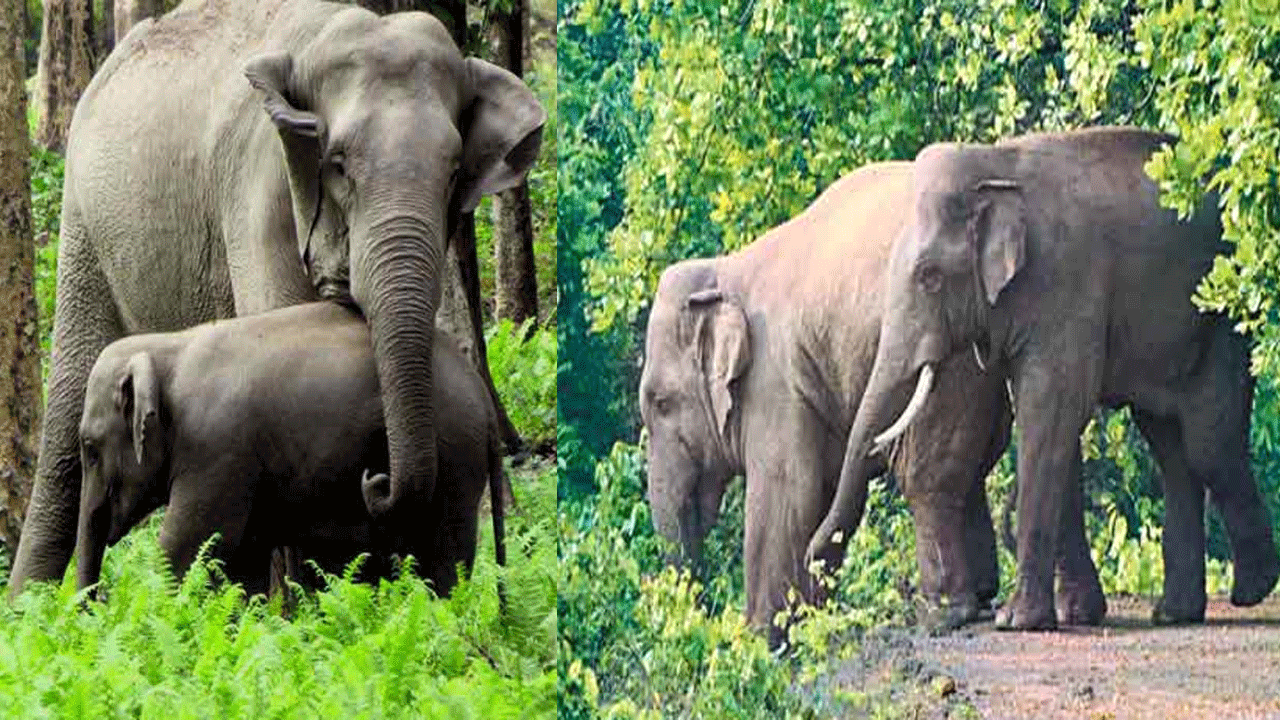
Elephants depressed psychologically in Bengal due to closer human habitats
Elephants roaming in the South Bengal woods close to the human habitats are struggling high to negotiate with persisting psychological pressure, the scientists have revealed.
Driven by habitat loss, human activities, and climate change, the Asian elephants - mainly the parts of the migratory herds, are increasingly forced to navigate human-dominated landscapes, often resorting to crop foraging to meet their nutritional needs. Elephants adjust their foraging behaviour, social interactions, and even vocal communication to adapt to human presence.
But, the question is, how do these adjustments affect them internally?
As explained by Prof Raman Sukumar from the Centre for Ecological Sciences, Indian Institute of Science: "Elephant-human interactions vary significantly across different regions, ranging from passive and active deterrents to aggressive retaliation." He says, explaining the menace:“Elephants are already under stress from their aggressively shrinking habitats. Aggressive human responses to crop-raiding can further amplify their stress, often more than human presence alone."
The Bankura Forest Divisions currently has 66 migratory elephants those arrived from the Dalma Range in Jharkhand last month. They are lodged split in two parts. In Barjora Range, 58 elephants are staying in Saharjora Range and 7 were spotted at Chak Patrasayar within Patrasayar Range on Tuesday morning. One maljurian tusker meanwhile has migrated to Radhurbaid in Gangajalghanti Range, as stated Sheikh Farid, Divisional Forest Officer, Bankura (North). The maljurian, too, was staying in Saharjora since last 9 September - two days after the herd entered Bankura through West Midnapore Ranges.
Beyond the Protected Areas, a new study shows elephants living in fragmented habitats in central India and facing frequent encounters with humans experiencing significantly higher physiological stress compared to those in more natural landscapes.
Underlying physiological changes often drive behavioural alterations in elephants and understanding this connection helps interpret animal responses better.
Mitigating negative interactions between human and elephants requires both modern technology and strong local participation.
Elephants adjust their foraging behaviour, social interactions, and even vocal communication, to adapt to human presence.
But how do these adjustments affect them?
Glucocorticoid hormones produced by the adrenal glands of elephants are crucial in stress response, making them key indicators of how they physiologically adjust to human disturbances. Similarly, thyroid hormones, particularly triiodothyronine (T3), reflect the metabolic state of animals facing nutritional stressors.
Sanjeeta Sharma Pokharel, Assistant Professor at Kyoto University’s Hakubi Centre and lead author of the paper, has been analysing elephant dung to understand trends in the faecal levels of glucocorticoid metabolites and T3 in relation to regional habitat fragmentation, human responses, and dietary variations. She collected fresh dung samples after elephants defecated and moved on during the peak crop-foraging period that coincided with crop harvest, allowing more accurate evaluation of human-elephant interactions.
“This non-invasive method allows me to monitor the health of elephants without disturbing them or altering their natural behaviours,” she explains.
Pokharel’s recent fieldwork in South Bengal’s West and East Midnapore districts — part of central India’s highly fragmented elephant range — revealed significantly higher levels of fGCM hormone against lower fT3, compared to samples from elephants in southern India and the relatively less fragmented habitats of North Bengal belonging to the Northeast population, including Jalpaiguri, Gorumara and Buxa, Jaldapara National Parks. The levels of fGCM did not vary significantly between samples obtained from elephants in southern and northeastern landscapes, likely due to lesser human disturbances and the presence of protected areas.

























